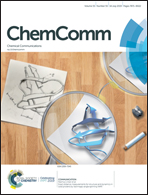Oxygen-deficient WO3via high-temperature two-step annealing for enhanced and highly stable water splitting†
Abstract
When grown according to the conventional one-step annealing process at 550 °C, WO3 exhibits low photocurrent density and inferior photocurrent retention. In contrast, after a two-step annealing process at first 550 °C and second 700 °C, WO3 contains a higher concentration of oxygen deficiencies acting as shallow donors, thus leading to improved charge separation. Importantly, this results in a substantial photocurrent increase and higher material stability, two criteria that are of utmost importance for efficient photoelectrochemical water splitting.



 Please wait while we load your content...
Please wait while we load your content...